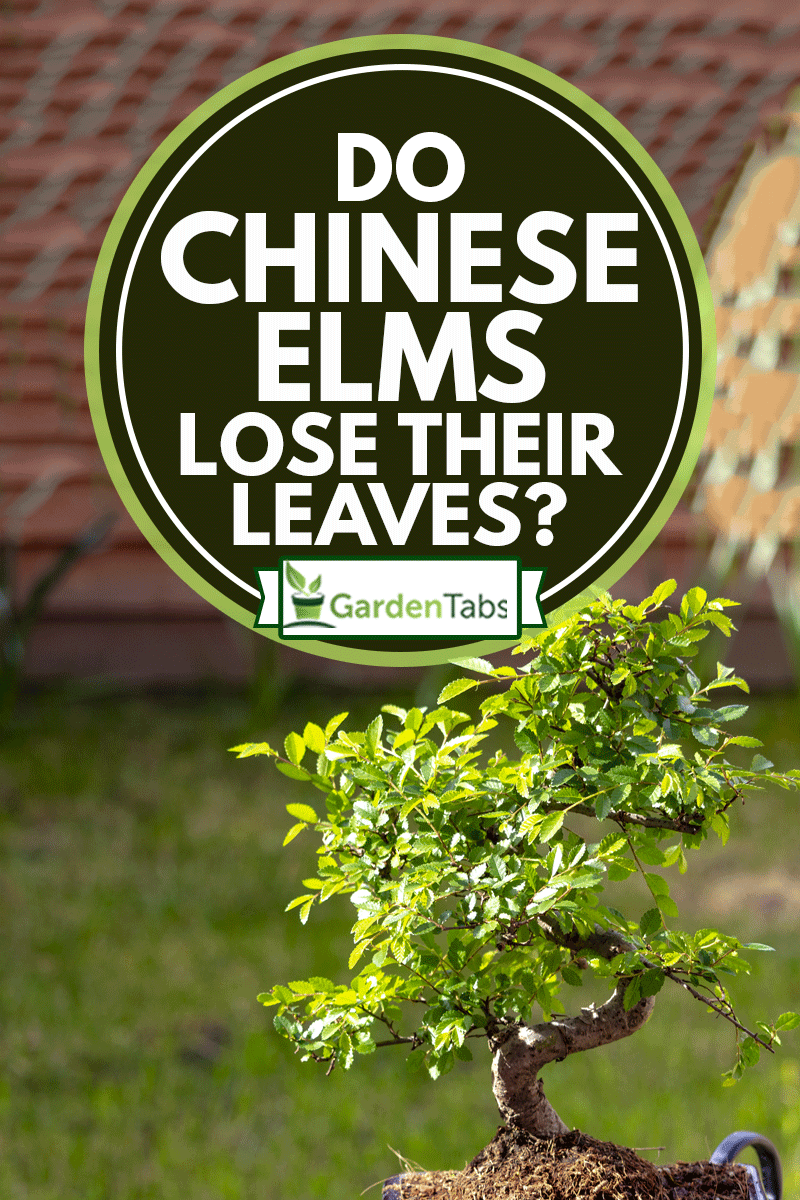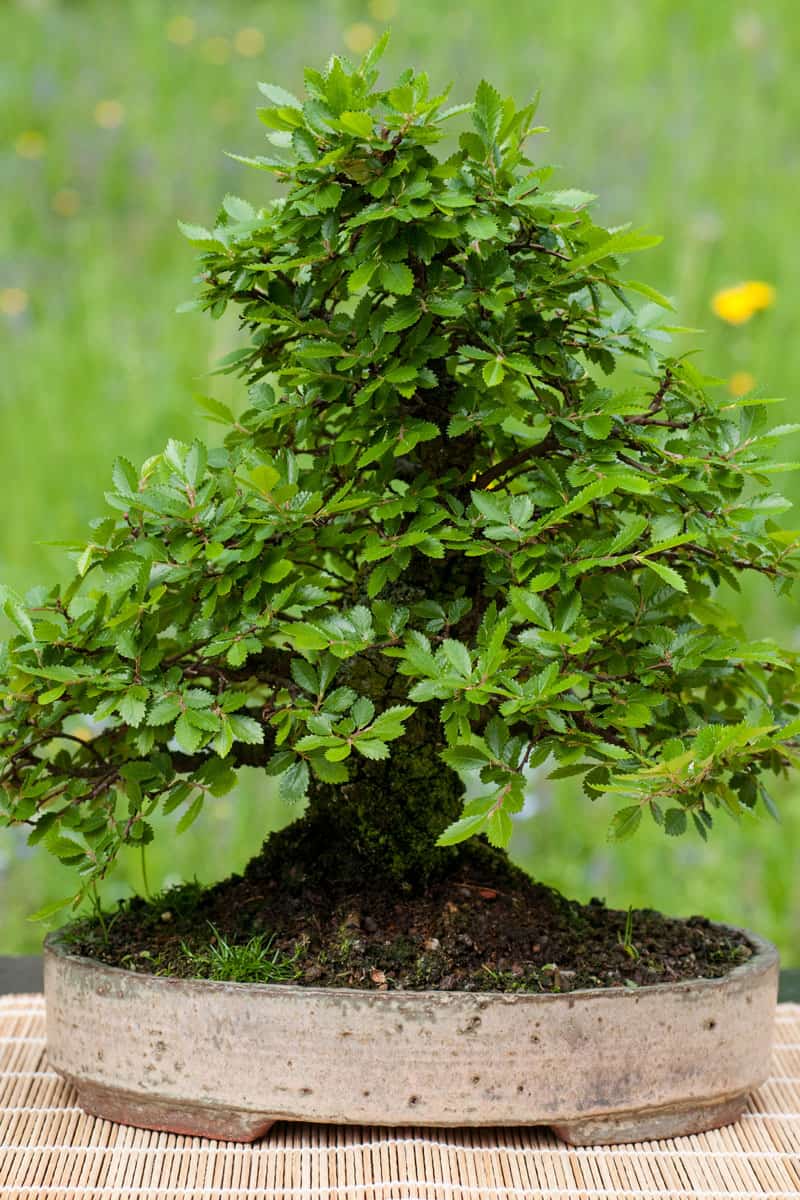Chinese elms have become popular choices among gardeners as full-grown trees and bonsai trees. It has led many people to wonder more about them, and leaf loss is often a common discussion point. We did extensive research into this topic and found a definitive answer about whether these trees suffer leaf loss during the year.
Chinese elms do lose their leaves, as they're classified as semi-deciduous. This classification asserts these trees lose part of their foliage for a short period. Leaves fall around late December for Chinese elms in more extreme climates, such as deserts. But they do retain their foliage all year in milder environments.
However, there's a bit more to discuss when it comes to a Chinese elm's leaf loss. Our following sections will dive further into this topic and answer a few other essential questions about these trees. You'll soon know everything a person would ever want about the leaves of Chinese elms.

Why is Your Chinese Elm Losing its Leaves?

As mentioned above, Chinese elms fall into the botanical term of semi-deciduous, also known as semi-evergreen. It refers to a tree that loses part of its foliage for a short time, where the old leaves fall off and new ones start to grow. It's a complex way of saying the tree will drop some of its leaves naturally.
The number of leaves dropped will depend on environmental factors. For instance, semi-deciduous trees will drop more of their foliage as the temperatures dip and water conditions drop. These attributes make it not an excellent fit for people who want evergreen foliage in colder climates or extreme environments.
But it should stay evergreen in milder climates, as you'd find in coastal southern California. In fact, you should see evergreen foliage in any USDA hardiness zones 7 to 9. These areas are where experts anticipate Chinese elms to grow best and avoid any leaf loss throughout the year.
We suggest growing Chinese elm trees in areas that get full sunlight for optimal growth. These trees also prefer well-drained, moist soil with good fertility. Gardeners who place these trees within these areas shouldn't expect anything but a beautiful addition to their lawn.
Why are the leaves on my Chinese elm turning yellow?
If your Chinese elm's leaves are turning yellow, it's likely being caused by one of two diseases. The first culprit is called Dutch elm disease that causes yellowing foliage via a fungal infection. It's a disease spread by Chinese elms through native elm bark beetles.
These beetles work by carrying fungal spores with them, which will release into open tree wounds as they feed. It allows the spores to infect your elm, causing those leaves to turn an ugly yellow. Spring tends to be the season where Dutch elm disease rears its ugly head.
The second disease to look out for is called elm yellows, which is a summertime product. Elm yellows is considered a phytoplasma disease that's caused by elm leafhoppers picking up this condition from an infected tree. A leafhopper then transfers the disease onto a healthy plant, such as your Chinese elm. These leafhoppers work by piercing plant tissue with their sharp mouths to suck out the sap. Meanwhile, phytoplasmas are an organism that acts like bacteria.
Rid the Chiese Elm of Diseases
Managing both diseases requires adopting a scorched earth mentality. Basically, the best containment method is removing and destroying the entire tree as neither of these conditions is curable. It doesn't help that the transfer of them to other plants ends up being high.
Sadly, controlling the spread of Dutch elm disease is both essential and challenging. It tends to become widespread within a community once it does appear. Maintaining elm yellows isn't any easier as the condition can overwinter on fallen plant parts.
Gardeners need to do their best to collect these fallen materials and destroy them, along with the tree's destruction. It's the only way to prevent possible disease spread. We also recommend contacting your county extension agent to ensure the community can become aware of this issue.
Are Chinese elm trees messy?
Chinese elms have a reputation for being messy trees as they're constantly dropping seeds, leaves, and flowers. It can make your life quite frustrating as these droppings aren't the easiest to rake. They can also stick onto grass or bare spots on your lawn and/or driveway.
It's worth noting that these trees are highly allergenic, as well. Chinese elms are known for causing hives, triggering asthma, and several other issues related to allergies. These issues become a massive burden in dry weather and make them a bad fit for anyone with these conditions.
How often should I water my Chinese elm?
If you've got a young tree planted in summer or spring, watering it once per week could work for a cool climate. But three waterings each week is recommended in warmer climates. If you have a Chinese elm in a hotter, dry setting, daily watering sessions might be required for proper root establishment.
How do you prune a mature Chinese elm tree?
Mature Chinese elms don't require much maintenance besides a regular trim now and again. The process itself isn't overly complicated; it consists of following these five steps:
Step 1: Examine the Tree
This pruning process starts with examining the tree for dead, broken, or damaged branches. It's essential to notice these branches as they can begin to rot on the tree, which causes them to house fungi or insects that cause severe damage.
Step 2: Grab Your Pruning Sears
If you encounter any, use pruning shears to remove the damaged or dead branches. Make sure to cut these branches at the place where they join with other ones or the trunk. Proceed to make this cut at an angle that'll help slow sap production and limit damage from the pruning process.
Step 3: Look for Branches with Disease or Insect Problems
You'll then want to look for branches, which show signs of disease or insect problems like fungal growth, boreholes, wilting leaves, etc. If these issues are left unchecked, the branches can spread issues to the rest of your Chinese elm tree and cause sickness.
Step 4: Cut the Disease Branches Off
Cut those diseased branches off close to the truck or connected branch. As before, you'll want to make this cut at an angle that stops sap production to help prevent more damage. People with fungal or insect problems will need to apply pesticides onto the tree for health purposes. Dispose of the cut branches immediately to stop the potential spread throughout your garden or lawn.
Step 5: Shape Your Chinese Elm Tree
Shape your Chinese elm tree by checking for branches that might be growing too near each other. Cut them back and remove any that blocking lower parts of your tree from sunlight or are growing unevenly.
If you stick with this guideline, your mature Chinese elm tree should stay in good condition. But stay vigilant and keep your eyes open for any signs of potential issues.
In Closing

We hope our discussions on Chinese elm trees answer all your questions. But if you have any more, please don't hesitate to leave a post in our comment section. We'll make sure to respond as quickly as possible. Thanks for reading!

I live in the San Joaquin Valley between Fresno and Bakersfield California. I have two mature very large Chinese Elm trees that have been dropping leaves 🍃 like rain drops. They are not yellow. Some are large leaves, some are small. The local nursery can’t find anything wrong with the branch/leaves I have brought in. I have reached out to master gardeners, UC Davis but no answer. The trees leaf out beautiful ly in the spring but start dropping right away. Please HELP!
Our Chinese elm tree has lost all of its top leaves in the last month. We live in Marin County in California and have had some extreme weather but are not sure if this would cause such a massive leaf drop? It’s almost like it has a monk tonsure–top half no leaves, bottom half looks normal. Any ideas?